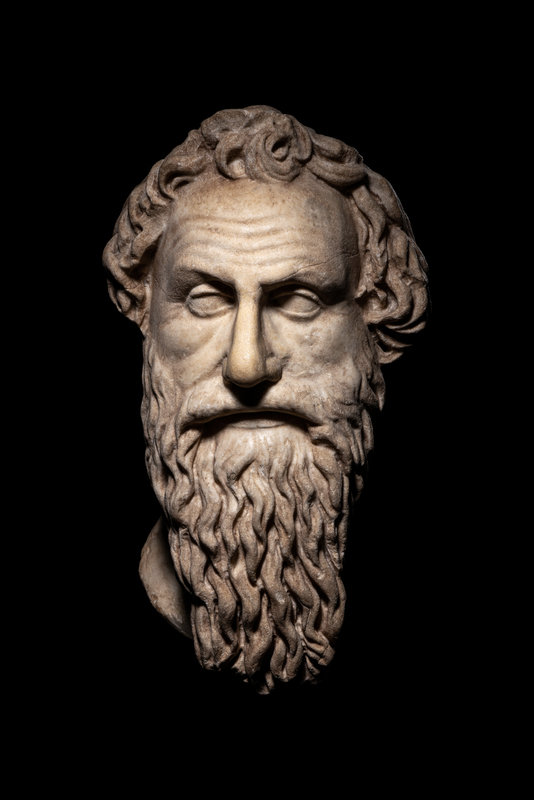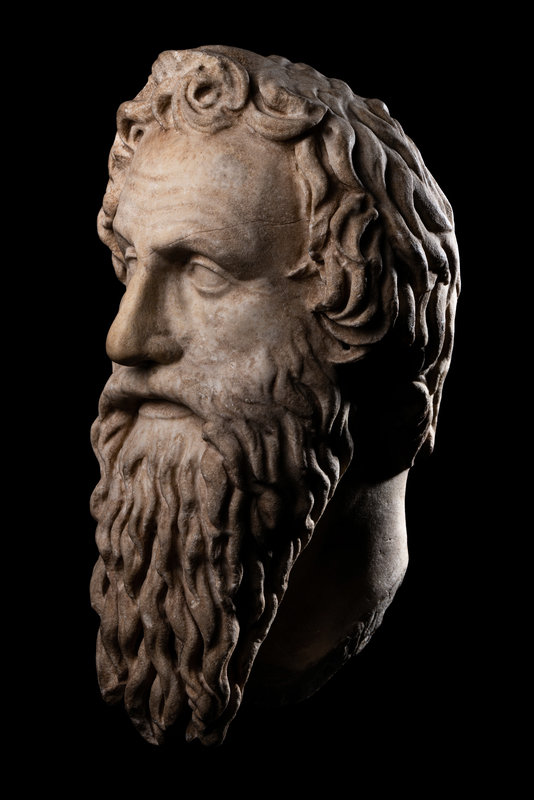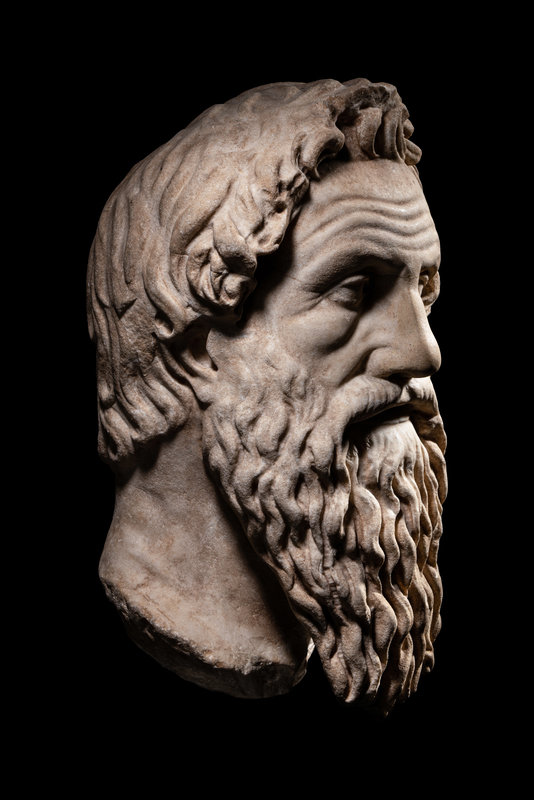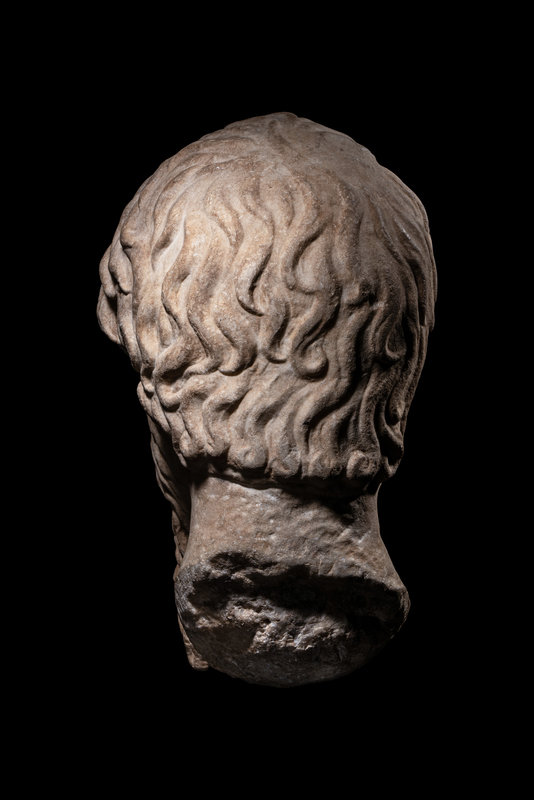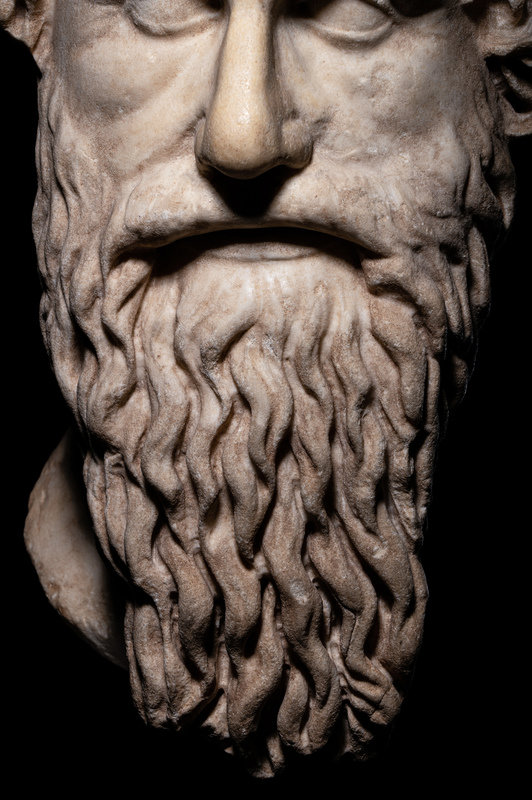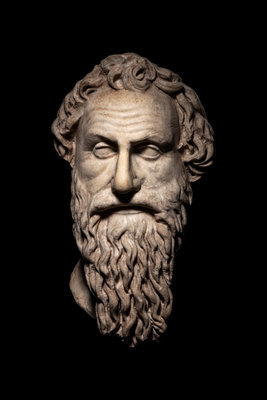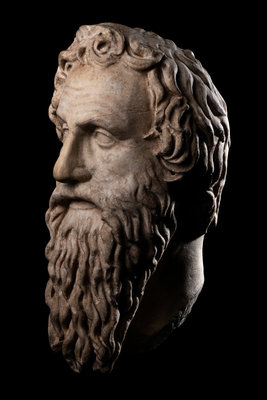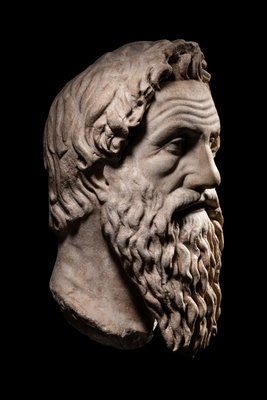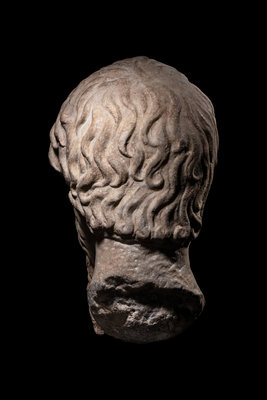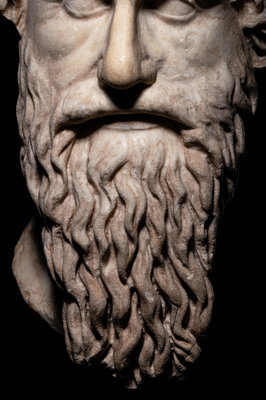Condition Report
Contact Information
Auction Specialist
Lot 163
A Roman Marble Portrait Head of Antisthenes
Sale 1035 - Antiquities and Ancient Art: A Study
May 26, 2022
10:00AM CT
Live / Chicago
Own a similar item?
Estimate
$100,000 -
150,000
Price Realized
$100,000
Sold prices are inclusive of Buyer’s Premium
Lot Description
A Roman Marble Portrait Head of Antisthenes
Circa Late 1st-Early 2nd Century A.D.
Height 18 inches (45.7 cm).
Provenance:
Galleria Geri, Milan, prior to November 1968.
Sotheby's, New York, Antiquities and Islamic Art, 9 December 1981, Lot 239.
Private Collection, California, 1981, acquired from the above.
California Museum of Ancient Art, prior to 1988.
Royal Athena Galleries, New York, 1988.
Property from a distinguished private USA collector, 1988-2012 (Washington, D.C.).
Christie's, New York, Antiquities, 5 December 2012, Lot 168.
Published:
Galleria Geri, Notiziario Delle Gallerie D'Arte Geri (Exhibition Gazette), Milan, November-December 1968, no. 5.
Note:
This over-lifesized portrait head is a superb example of the Greek philosopher known as Antisthenes (circa 446-370 B.C.). Originally a student of the rhetorician Gorgias, Antisthenes later came to adopt the ethical teaching of Socrates and was said to be the founder of Cynic philosophy. The Cynics would be a philosophical school throughout the classical period. Famous for their obscenity, asceticism, and commitment to virtue, they challenged cultural norms and social conventions. Antisthenes once said, “It is better to fight with a few good men against all the wicked, than with many wicked men against a few good men.” (Diogenes, Book VI, 12). To the Cynics, it wasn’t enough to debate the issues of high moral standards but to put them into practice through rigorous training. This philosophy and dedication to moral excellence would go on to inspire some of antiquity’s greatest leaders such as Alexander the Great and the Roman Emperor Marcus Aurelius.
Portraits of Antisthenes are properly attributed from a bust found at Hadrian’s Villa, now in the Vatican Museum, which is inscribed with his name. All known portraits have the same facial features that epitomize this unkempt intellectual: full lengthy beard, thick mustache obscuring the upper lip, and disheveled curly hair. For another portrait identified as Antisthenes, see V. Poulsen, Les Portraits Grecs, Pl. XXXXIV, fig. 50.
